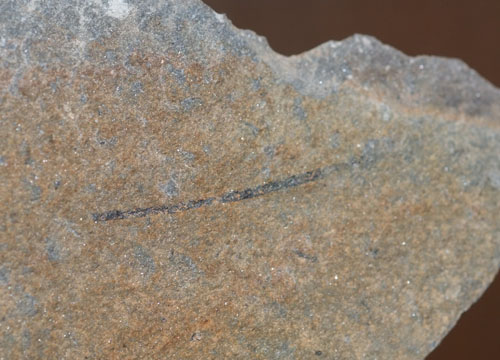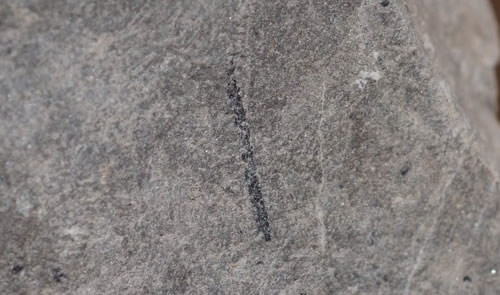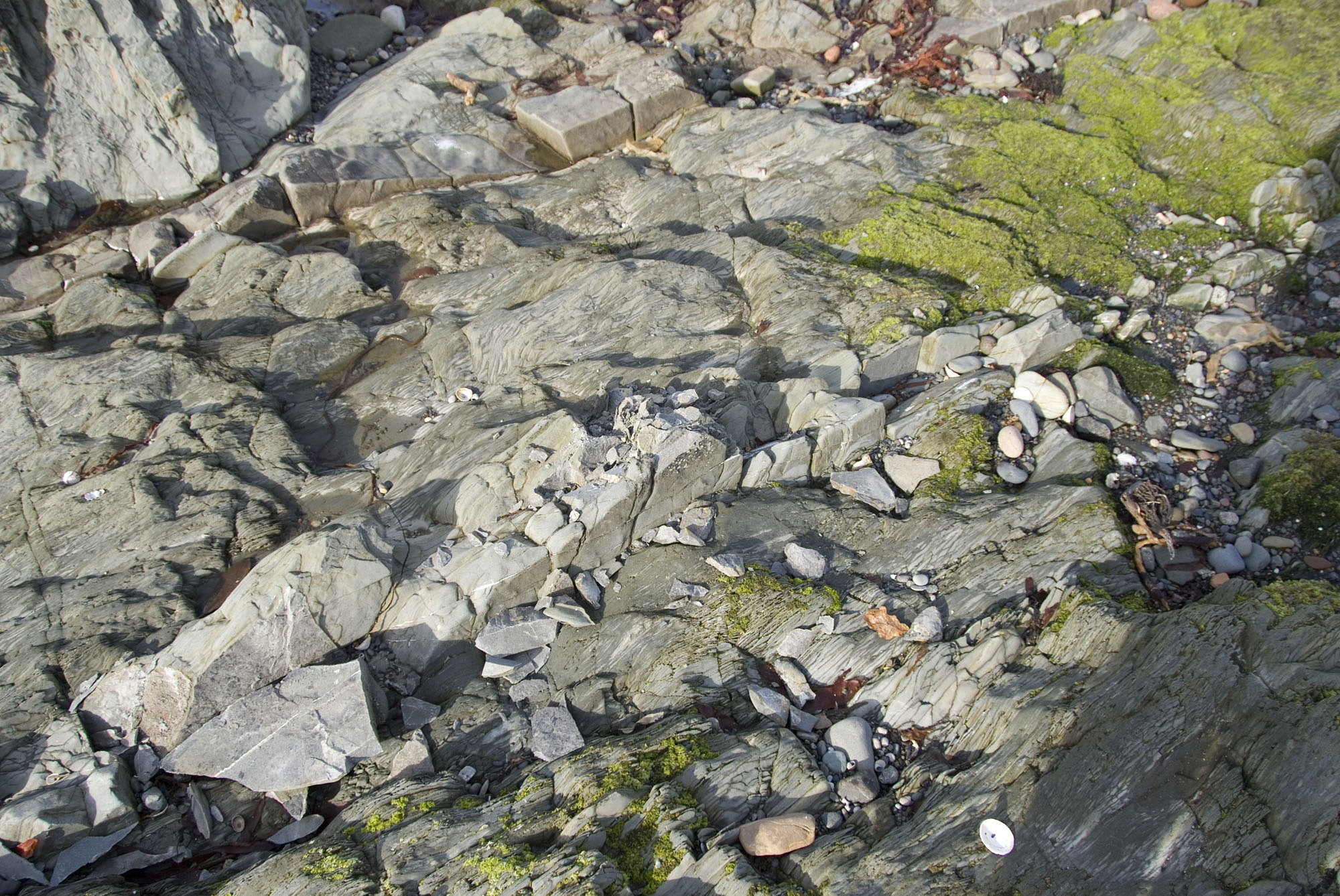The rocks at Shalloch (to the south of Girvan) to Whitehouse, including Woodland Bay, contain fossil graptolites and trilobites. Girvan is a well-documented area for fossils and is one of the most popular areas to collect in Scotland. This foreshore location is easy to access, but you will need the correct tools.
DIRECTIONS
♦ This guide covers the area from Shalloch to Whitehouse, including Woodland Bay. Woodland Bay can be found to the south of Girvan. It is easy to access and you can either cark at the main Shalloch car park, which is free and normally has a cafe brewing lovely cups of tea, or drive further down the A77 to be closer to the best beds at Whitehouse.
♦ Walking from the Shalloch car park, it is just over 3km to Whitehouse, so you may want to split your visit into two parts.
♦ There is plenty of parking along the A77 near Whitehouse.
♦ Ref: 55.22037°N, 4.86936°W
PROFILE INFO
FIND FREQUENCY: ♦♦♦ – Fossils can be hard to find if you do not have the correct tools. You will need to split the flaggy beds to find fossils in the shale, although they are poorly preserved and will need treatment to consolidate the weak matrix.
CHILDREN: ♦♦♦♦ – The rocky foreshore makes this location only suitable for older children. You need to split rocks to find fossils, so an adult should help, and children should only help search in the debris from the split rocks.
ACCESS: ♦♦♦♦ – An excellent car park with toilets, cafe etc, and a very short walk to the beach. There is a lovely sandy beach for children with plenty of other things to do in the town.
TYPE: – Fossils can be found in the flaggy beds exposed on the foreshore. Most of these are vertical and so can easily be split.
FOSSIL HUNTING
This area can be a little bit hit or miss. You will certainly need the correct tools if you are going to find anything, as you will need to split the flaggy beds on the foreshore. This is not a location where you can easily pick up fossils just lying loose on the beach.
If you have parked at the Shalloch main car park, the rocks begin with the Shalloch Formation, which is Ordovician in age. These can contain graptolites, but can be hard to find. Graptolites can also be found at Woodland Bay, but these are Silurian in age. These are the easiest to find, although you will still need the correct tools. The best rocks are in the middle of the bay.

The best beds are south of Woodland Bay, just before Ardwell Bay. These rocks not only contain graptolites, but also contain trilobites, including Dionide, Novaspis, various agnostids and the large eyed forms. They can be found in pale green shaley mudstone belonging to the Whitehouse Formation.

GEOLOGY
There are three different formations spanning the Ordovician and Silurian along the coast from Shalloch to Whitehouse (including Woodland Bay).
The Woodland Formation (Silurian) is exposed on the foreshore at Woodland Bay. It is 21m thick and rests directly on Shalloch Formation. The basal part of the formation consists of fine- to medium-grained, blue-grey sandy beds, with thin interbeds of green, fine grained sandstone and light dark grey banded siltstone. Graptolites can be found in the thin layers of shale. The Wooland formation is Rhuddanian in age (443.4 million to 440.8 million years ago) and is from the Newlands Subgroup (part of the Girvan Group). The Rhuddanian is the first of three stages of the Llandovery Series.
The Shalloch Formation (Ordovician) is exposed on the foreshore from Woodland Bay to Shalloch. This is a sequence of alternating fine- to medium-grained turbiditic sandstone and pale green silty mudstone. Graptolites can also be found in this bed.
The rocks are from the Pusgillian Stage of the Whitehouse Subgroup, part of the Ardmillian Group from the Caradoc series.
The Whitehouse Subgroup (Ordovician) is part of the Ardmillian Group and is exposed on the foreshore at Whitehouse. This is composed of Sandstones, mudstones, sandy limestones and shales. The Odovician Ardmillian Group is from the Caradoc Series and about 450 million years old.


SAFETY
Woodland Bay is usually a fairly safe area. While the tide reaches the small embankment, this can easily be climbed and it is not really possible to be cut off here. However, the rocks can be quite hard, so care should be taken when using sharp tools.
EQUIPMENT
A hammer, splitting chisel and safety glasses are essential, but the best tool is an Estwing Pointed Pry Bar. This will make your work very easy and can be purchased from UKGE.
ACCESS RIGHTS
This site is an SSSI. This Special Site of Scientific Interest, means you can visit the site, but hammering the bedrock is not permitted.
 Scotland’s fossil resource is at risk of abuse and damage, and so we must all safeguard and managed fossil collecting to ensure its survival for future generations. For this reason it is VITAL you read and adhere to the Scottish Fossil Code for ALL sites in Scotland.
Scotland’s fossil resource is at risk of abuse and damage, and so we must all safeguard and managed fossil collecting to ensure its survival for future generations. For this reason it is VITAL you read and adhere to the Scottish Fossil Code for ALL sites in Scotland.
It is important to follow our ‘Code of Conduct’ when collecting fossils or visiting any site. Please also read our ‘Terms and Conditions‘
LINKS
♦ Buy Fossils, Crystals, Tools
♦ Location Discussions
♦ Deposits Magazine
♦ Join Fossil Hunts
♦ UK Fossils Network











































